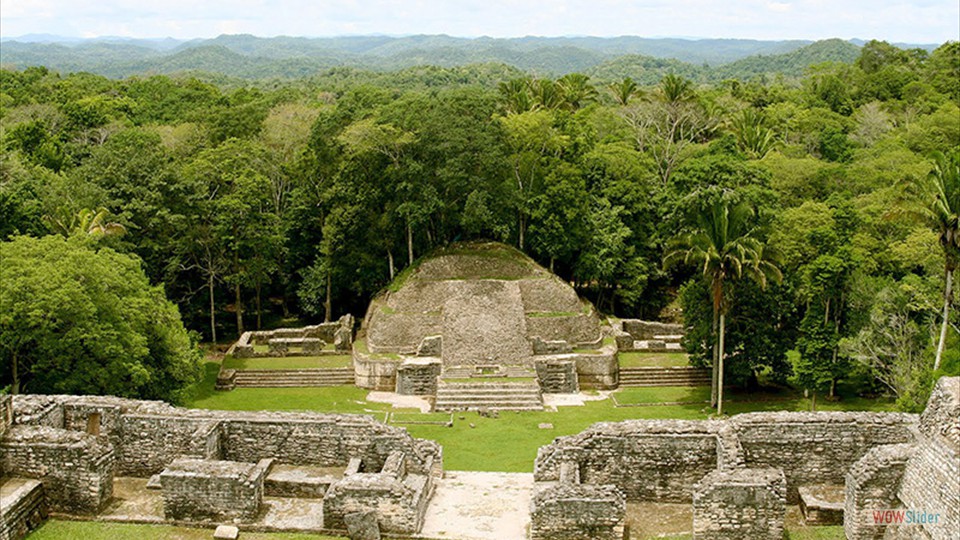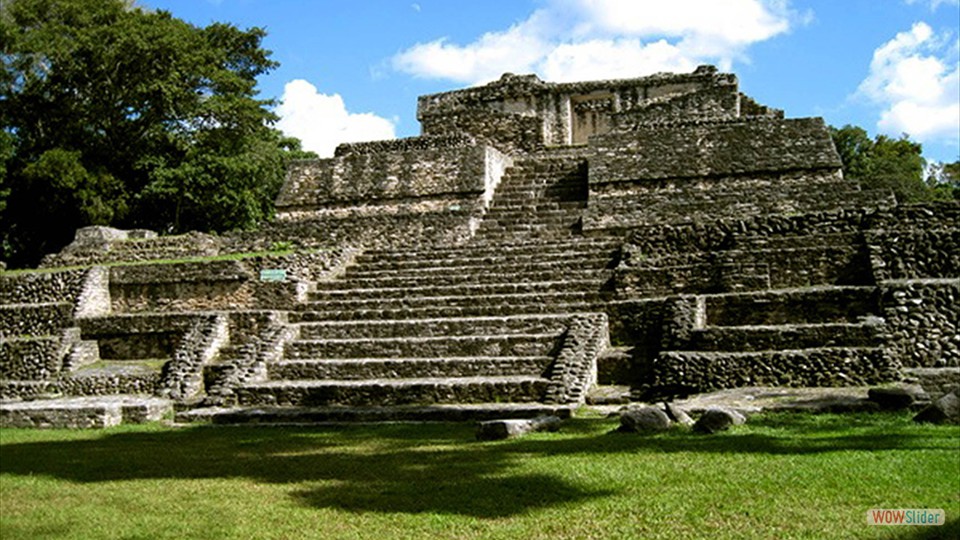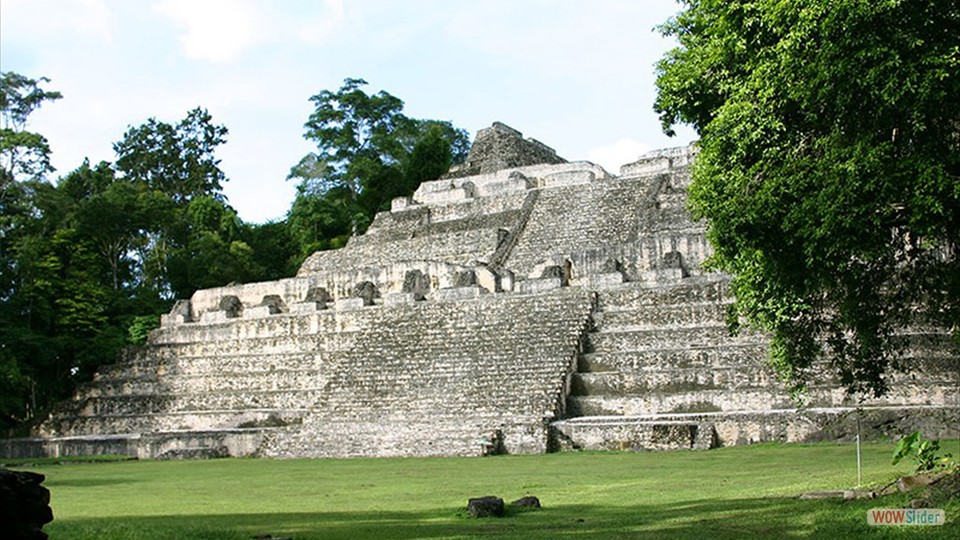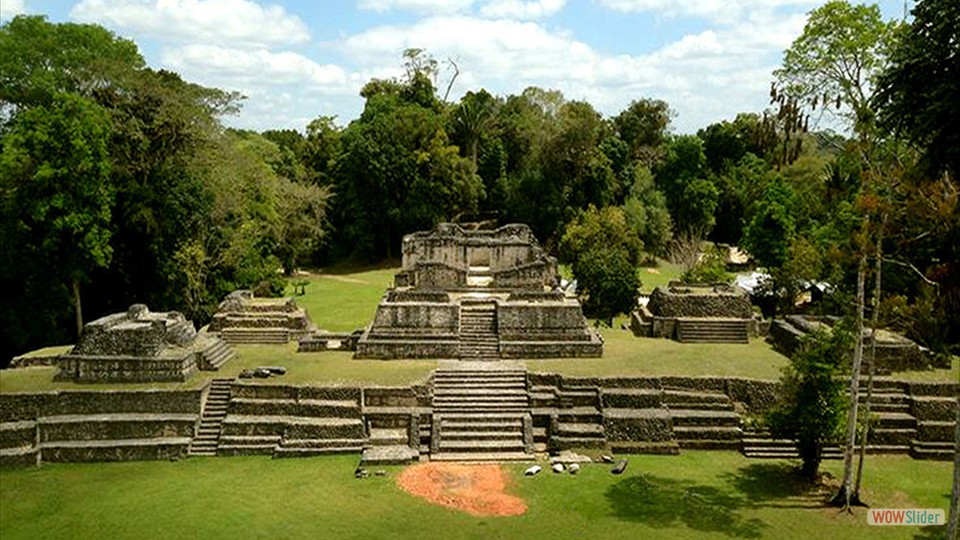Caracol, means "conch shell" or "snail" and comes from the long winding access road which twists and turns much like the spirals on the shell of a snail. Caracol was not the Mayan name for the site. The original name is still unknown, though the hieroglyph for the site is prominently displayed on many monuments. Caracol is located in the Cayo district. It can be very difficult to reach Caracol during the rainy season. The total drive time from the Western Highway is up to 3 hours. It's about a 45 minute drive to Caracol from the Augustine headquarters located in the Mountain Pine Ridge. "Discovered" in the 1930's and "rediscovered" in the 1950's, Caracol was known to be an important ceremonial center of the Maya. But due to its difficult accessibility it remained alone in jungle until 1985. It is one of the largest sites in all the Mayan World, the largest in Belize and is special for many reasons. The size of its center, the large architectural constructions, the vast array of monuments and the incredible beauty of the site. The center of the site has about 20 major plazas surrounded by temples, the largest of which is known as Caana (meaning "room with a view" in Mayan) which rises 145 feet above the forest floor making it the tallest Mayan structure in all of Belize. From the top of Caana, you can see miles of surrounding forest and temples. The central part of the ruins contains a vast array of sacbe's that wind their way throughout the site. Another great find at Caracol is the discovery of an elaborately carved ball-court marker from the Early Classic Period. The markings on this ball court marker proclaims a military victory over Tikal or possibly refers to the capture of an important person. A victory over the all powerful Tikal puts Caracol way up on the list of important sites. Caracol was at its peak during the Classic Period (600 - 900 C.E.)and is thought to have declined somewhere around 900 C.E.. Due to the size of Caracol and its obvious importance to the culture as a whole, archeologists believe that Caracol has the potential for answering many questions about the Maya.

Copyright: © 1999 thru 2021. All the content; content being images, statements and writing of this website including E-Book are the copyright of Freedom8.net and Walter F. Petrucci, West Hurley, New York.
All rights expressly reserved and as such, protected by U.S. and International Copyright Laws. Design by freedom8 webmaster Version8.





 1
1 2
2 3
3 4
4 5
5